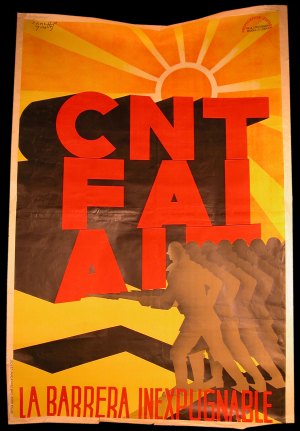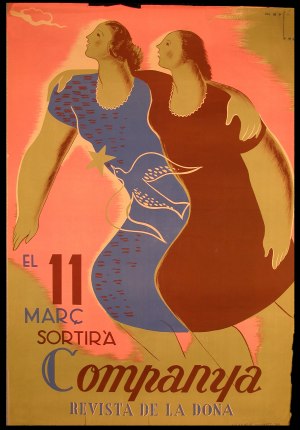

Written: June 24, 1931
First Published: The Militant, Vol. IV No. 16, 25 July 1931, p. 6.
Source: Fourth International [New York], Vol.IV No.10, October 1943, pp. 315–316.
Translated: The Militant.
Transcription/HTML Markup: David Walters.
Proofread: Einde O’Callaghan (January 2013).
Copyleft: Leon Trotsky Internet Archive (www.marxists.org) 2003. Permission is granted to copy and/or distribute this document under the terms of the GNU Free Documentation License.
In a letter to comrade Lacroix, I presented some supplementary considerations on the subject of the situation in Spain. [1*] Unfortunately, I don’t have enough information to know how the various groups of the Spanish communists pose the political questions of the day. The analysis of the revolutionary situation is, in such a case, more difficult than playing chess blindfolded. On all questions there remain some points on which I require additional elaboration.
The main part of my article concerning the dangers threatening the Spanish revolution consists in proving that between the bourgeois republican revolution of April of this year, and the proletarian revolution to come, there is no room for a special ”workers and peasants” revolution. [1] Incidentally, I noted that this does not mean that the party of the proletariat has to devote itself to the peaceful assembling of strength until “the final and decisive conflict.” Such a conception would be a philistine anti-revolutionary one. While there cannot be either an intermediary revolution or an intermediary regime, there can and will be intermediary mass actions, strikes, demonstrations, clashes with the police and the troops, tumultuous revolutionary convulsions in which the communists will naturally be at the most exposed fighting points. What may be the historical meaning of those intermediary fights? On the one hand, they may introduce democratic changes in the bourgeois republican regime. On the other hand, they will prepare the masses to conquer power in order to create a proletarian regime.
The participation of the communists in these fights, and especially a leading participation, demands from them not only a clear understanding of the development of the revolution as a whole, but also the capacity to put forward at the right moment such partial, sharp, fighting slogans that by themselves don’t derive from the “program,” but are dictated by the circumstances of the day and lead the masses forward.
The enormous role of the Bolshevik slogan “Down with the ten capitalist ministers” is well known, in 1917, at the time of the coalition between the conciliators and the bourgeois liberals. The masses still trusted the socialist conciliators but the most trustful masses always have an instinctive distrust for the bourgeoisie, for the exploiters and for the capitalists. On this was built the Bolshevik tactic during that specific period. We didn’t say “Down with the socialist ministers,” we didn’t even advance the slogan “Down with the Provisional Government” as a fighting slogan of the moment, but instead we hammered on one and the same point: “Down with the ten capitalist ministers.” This slogan played an enormous role, because it gave the masses the opportunity to learn from their own experience that the capitalist ministers were closer and dearer to the conciliators than the working masses.
Slogans of that type are the best fitted for the present stage of the Spanish revolution. The proletarian vanguard is fully interested in pushing the Spanish socialists to take over the whole power. For that purpose, it is necessary to split the coalition. The next task is the fight for the expulsion of the bourgeois ministers from the coalition. The achievement of this task in full or in part is conceivable only in connection with important political events, under pressure of new mass movements, and so on. Thus, in Russia, under the constant pressure of the masses, first Guchkov, Miliukov, then Prince Lvov, were ousted from the coalition government, which was then headed by Kerensky; the number of “socialists” in the government rose, and so on. After the arrival of Lenin, the Bolshevik party did not solidarize itself for one moment with Kerensky and the conciliators, but it helped the masses to push the bourgeoisie out of power and to test the government of the conciliators in practice. That was an indispensable stage on the road of the Bolshevik movement to power.
Insofar as it is possible to see from far away, the elections to the Cortes will show an extreme weakness of the rightist republicans of the Zamora and Maura type, and will bring about an overwhelming majority of petty-bourgeois conciliators ushers. The “democratic dictatorship of the workers and peasantry,” as a state-form in between bourgeois democracy and proletarian dictatorship, was a theory then promulgated [by the Stalinists. – Ed.] of different coloration: Radicals, Radical-Socialists and “socialists.” Notwithstanding this, we can expect almost with certainty the socialists and Radical-Socialists to cling with all their forces to their allies on the right. The slogan “Down with Zamora-Maura” is perfectly on the order of the day. It is only necessary to make one thing clear: the communists are not agitating in favor of the Lerroux ministry, nor are they assuming any responsibility for the socialist ministry, but at every given moment they deliver the strongest blow against the most definite and consistent class enemy, thereby weakening the conciliators and clearing the way for the proletariat. The communists say to the socialist workers: “Differing from us, you believe your socialist leaders; then, force them, at least, to take the power. In this we shall honestly help you. Afterwards, let us see by what happens which of us is right.”
We have approached this question in connection with the composition of the Cortes. But other events, for instance repressions against the masses, may give an extreme acuteness to the slogan: “Down with Zamora-Maura.” The victory in that field, i.e., the resignation of Zamora [2], would assume in this new stage almost the same importance, for the further development of the revolution, as the resignation of Alfonso in April. In putting such slogans forward, we must not let ourselves be guided by doctrinary abstractions, but by the state of consciousness of the masses, their way of taking the events, and the way they react to the various partial successes. The bare counter-balancing of the present regime with the slogan “A Proletarian dictatorship” or “A workers-peasants republic” is in itself absolutely insufficient for it will not catch on with the masses.
In connection with this, the question again rises of social. fascism. This silly invention of the terribly leftist bureaucracy is presently becoming in Spain the greatest obstacle on the way to the revolution. Let us turn again to the Russian experience. The Mensheviks and the S-R’s, then holding the power, led an imperialist war, defended the owning class, persecuted the soldiers, the peasants and the workers, made arrests, introduced the death penalty, condoned the killing of Bolsheviks, forced Lenin into illegal existence, kept the other Bolshevik leaders in prison, spread the most ignominious calumnies against them, etc., etc. All that is more than enough to call them in retrospect “social-fascists.” But there, in 1917, that word did not exist at all, which did not prevent the Bolsheviks, as is well known, from coming to power. After the terrible persecution of the Bolsheviks in July–August, the Bolsheviks sat together with the “social-fascists” in the bodies set up to fight against Kornilov. In the beginning of September, Lenin, from illegality, proposed a compromise to the Russian “social-fascists”: “Break with the bourgeoisie, take the power, and we, the Bolsheviks, shall peacefully fight for power within the Soviets.”
If there had been no difference between the conciliators and the Kornilovists, the real “fascists” of that time, the struggle of the Bolsheviks jointly with the conciliators against the Kornilov. ists would not have been possible, whereas that struggle played the greatest role in the development of the revolution, by throwing back the attack of the generals’ counter-revolution and by helping the Bolsheviks to tear the masses away once and for all from the conciliators.
It is precisely the nature of petty-bourgeois democracy to oscillate between communism and fascism. During the revolution, these oscillations become particularly acute. To regard Spanish socialists as a variety of fascism means to abstain beforehand from profiting by their inevitable oscillations to the left, to close off our way to the socialist and trade union workers.
As a conclusion to this letter, I shall note that the criticism and the unmasking of Spanish anarcho-syndicalism is an extremely important task, which cannot be postponed for a single day. The top leaders of anarcho-syndicalism represent the most masked, the most treacherous, and the most dangerous form of conciliationism with and servility toward the bourgeoisie. In its rank and file, anarcho-syndicalism contains large potential revolutionary forces. Our basic task here is the same as in regard to the socialists: oppose the rank and file to the tops. This task, however, must be carefully adapted to the specific nature of the syndicalist organization and the specific character of the anarchist mask. I shall deal with this in one of my next letters.
1. The Spanish Revolution In Danger, by Leon Trotsky.
2. President of the Provisional Government and then of the Republic, 1931–35. – Editor
1*. The first sentence was omitted from the Fourth International version of this article.
  Return to Trotsky’s
|

Last updated on: 25.1.2013